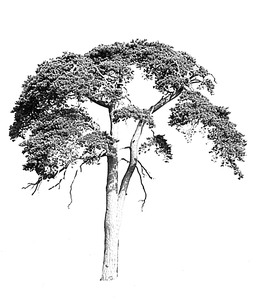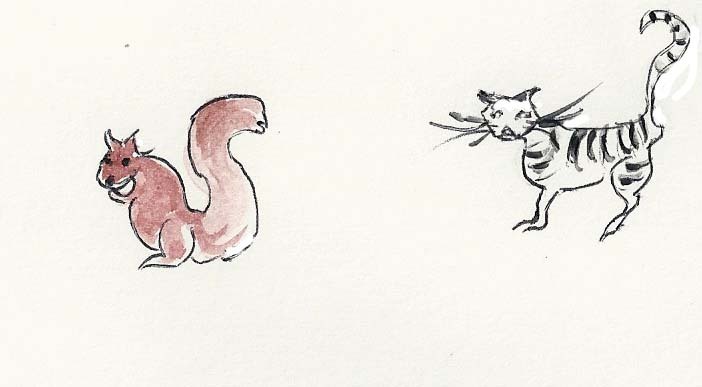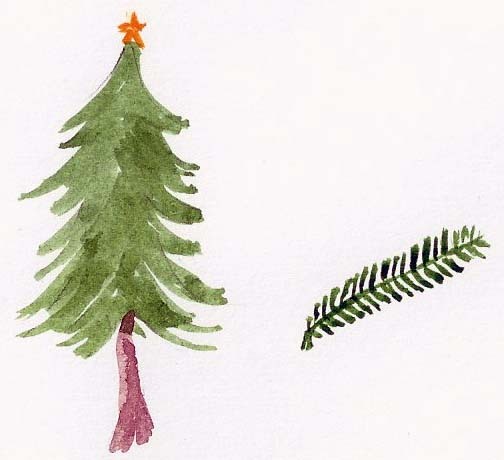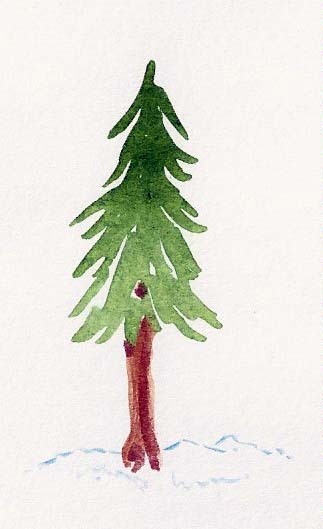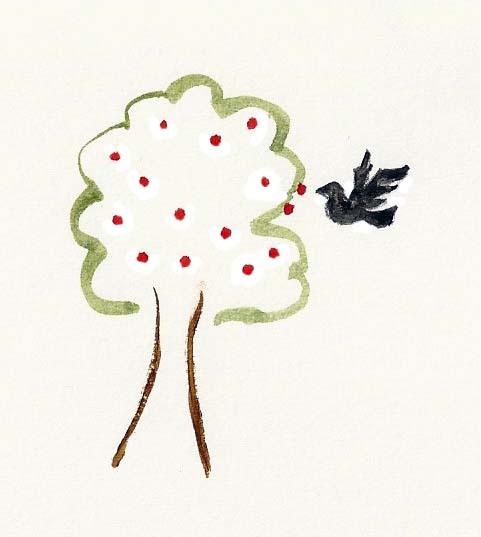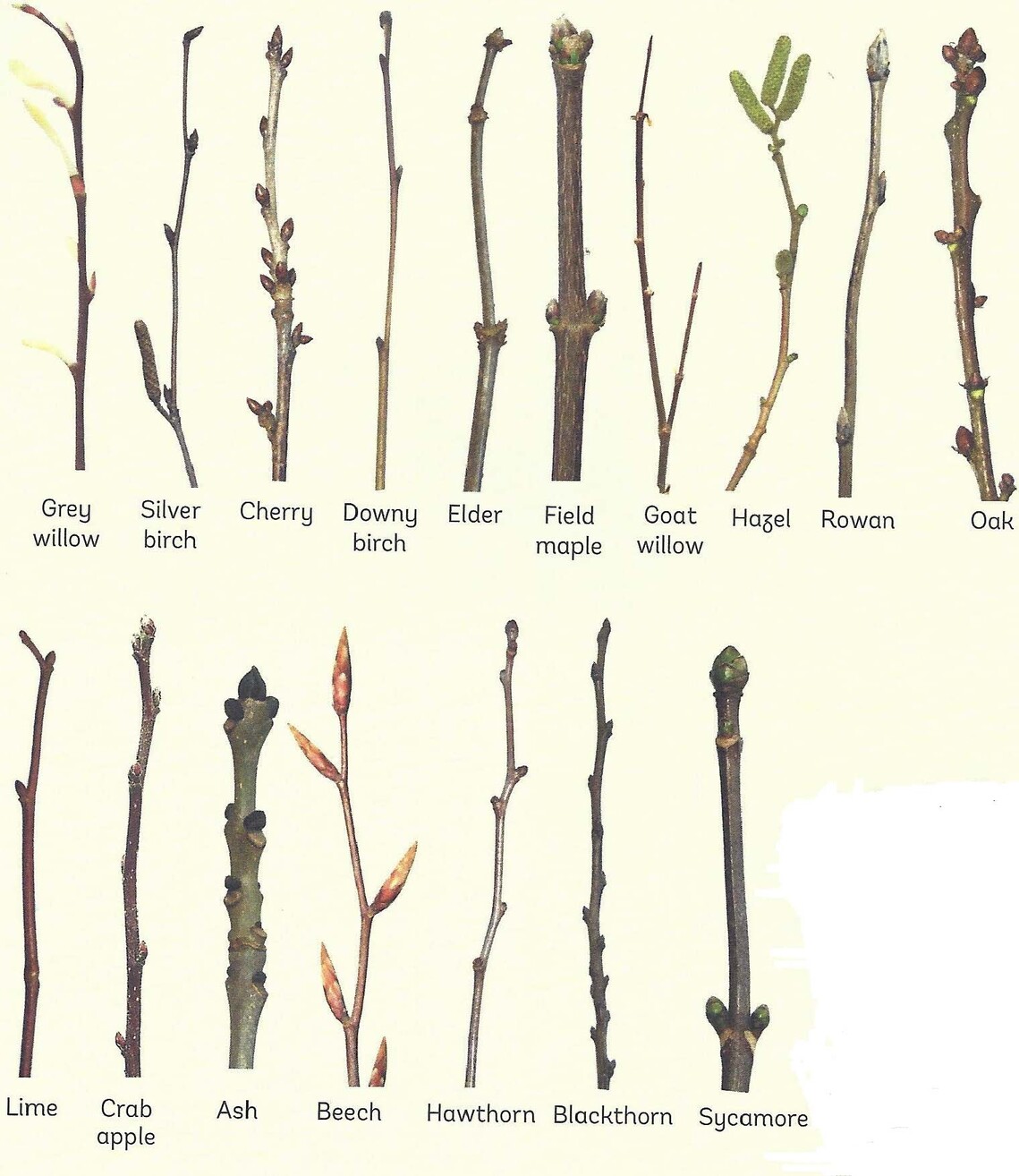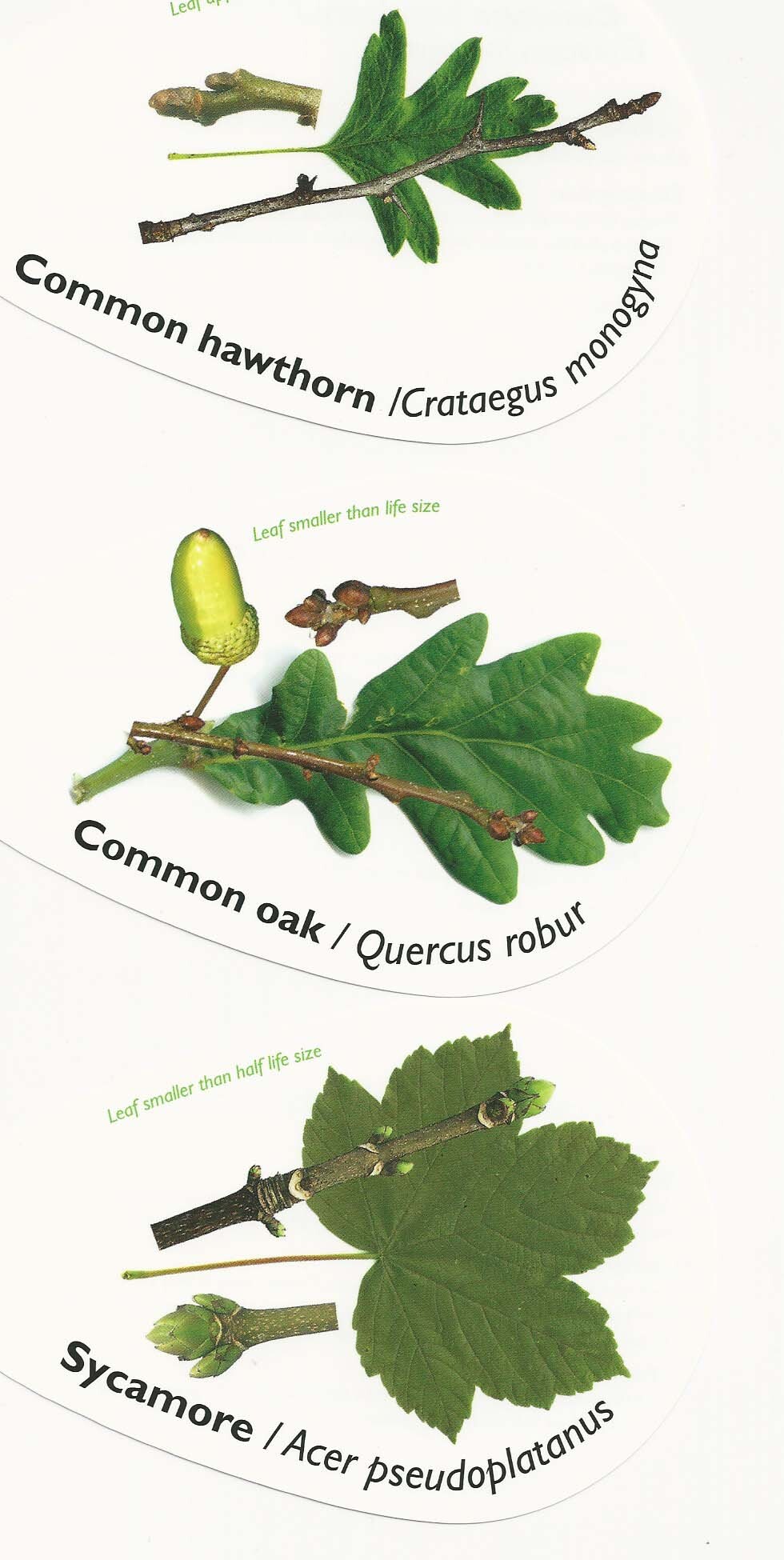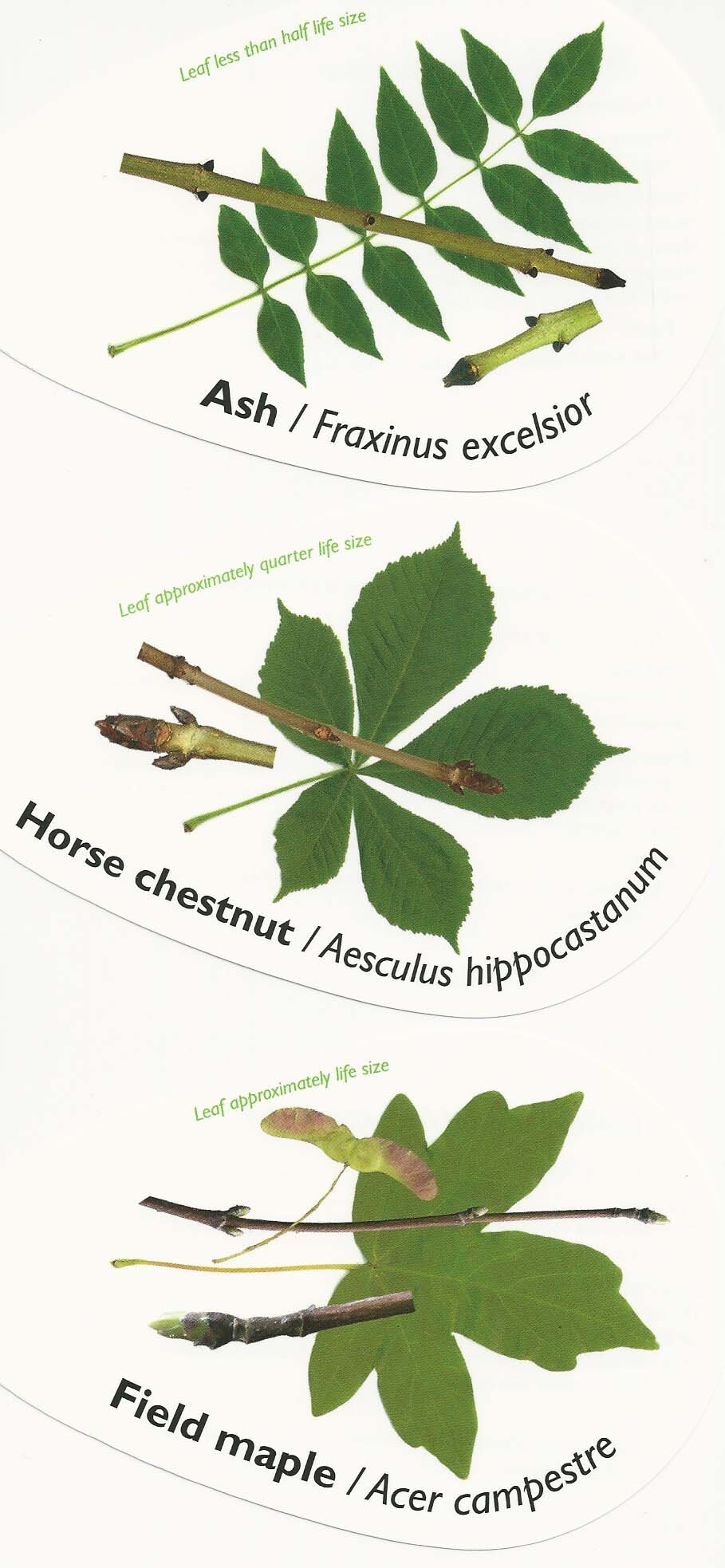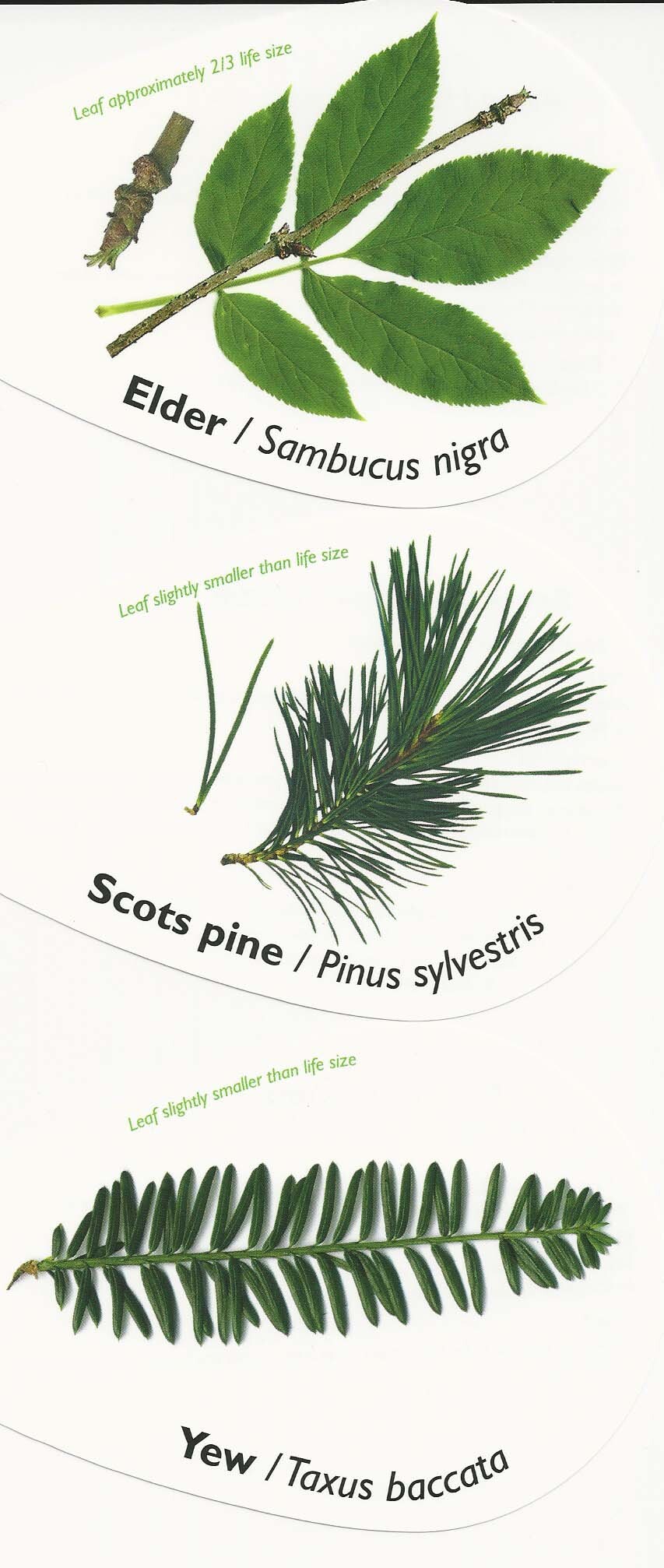The first part of this page is aimed at
Key Stage 1
Hallo, Welcome to our page all about Trees.
We hope you enjoy it!
Trees grow almost everywhere on our planet, except;
under the sea in the desert at the top of mountains and in ice regions
Trees are home to
some animals
and lots of birds
and millions of bugs
There are hundreds of different sorts of trees but there are only two types;
Deciduous: say dee-sid-you- us
and Conifer: say con-i-fer
A Christmas tree is a conifer
An oak tree is a deciduous tree
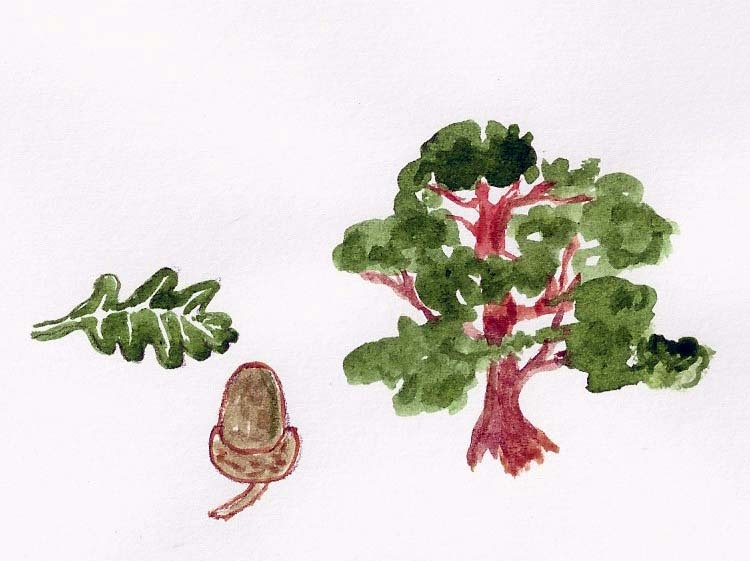
Conifer trees stay green in winter
Deciduous trees lose all their leaves in
the Autumn, the leaves turn yellow and gold and fall to the ground.
Trees have roots that go deep into the ground.
The roots suck up water from the ground,
this helps the tree to grow and helps to
stop flooding over the ground .

Sunshine turns the leaves green
and helps the tree to grow.
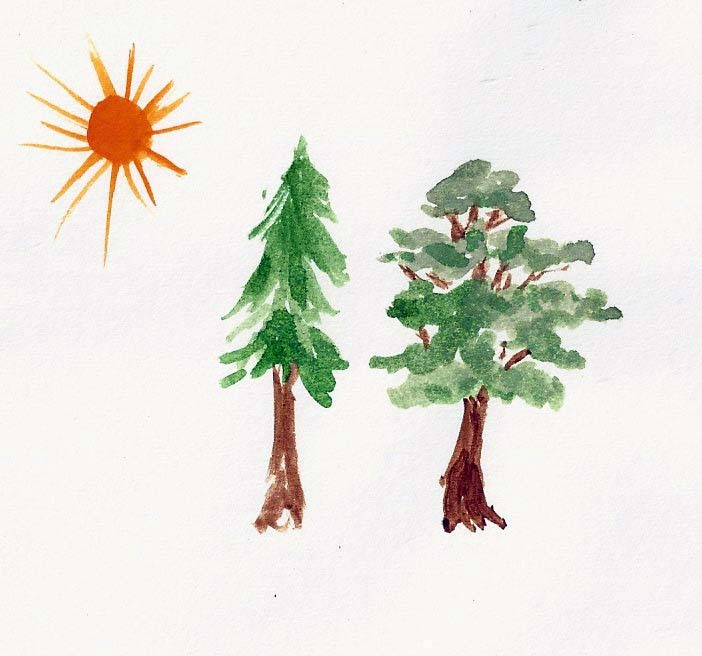
Trees also have berries and seeds.
What are the names of these tree seeds?
Birds eat the berries.
Leaves on trees are very important to us. They take in carbon dioxide and change it to oxygen which we breathe.
We use wood to make many different things
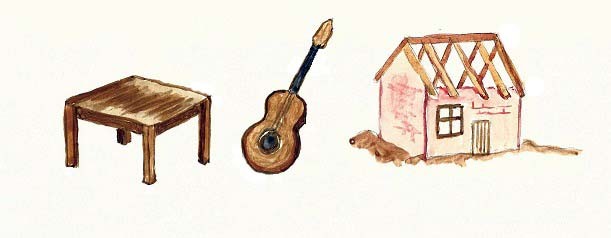
Some trees live for more than a thousand years. Oak trees often live for 800 years.
Trees are an important part of life on earth.
We must look after them.
This second part is aimed at Key Stage 2 or Secondary School
We gratefully acknowledge the Woodland Trust for permission to use their illustrations.
Here is a list of common trees and where they can be found, it also says if they are native or introduced
A Native tree means that it will grow in the United Kingdom naturally, it may have been imported in the long distant past but it can be said to have become ‘naturalised.
Below the list you will find pictures of the leaf shapes of these trees
Silver Birch: Native, will grow in almost any open or disused space as well as in woods and heaths, parks and gardens.
Common Lime: Native, widely planted in parks and along roadsides.
Hazel: Native, common in woodland, scrub and hedgerows.
Beech: Native in southern England, very common in parks and gardens also common in woods where it is sometimes the dominant species.
Alder: Native, common across the UK often found by river banks or in boggy ground.
Holly: Native, found almost anywhere in woods, hedges and gardens.
Hawthorn: Native, found almost everywhere except on poor sandy soils. Very common in hedgerows.
Oak: Native, very common throughout the UK
Sycamore: Introduced, very common in woods, parks, gardens and streets.
Horse Chestnut: Introduced, common in parks, village greens and gardens. Introduced from Turkey in the late 16th century
Field Maple: Native, common in woods but also popular in streets.
Ash: Native, common across the UK except in the far north of Scotland
Elder: Native, very common in hedgerows and woodland edges.
Scots Pine: Native tree to Scotland, abundant in Scotland but often used as a plantation tree
Yew: Native, most commonly found in churchyards but also planted in parks and gardens.
A good project is to choose a tree and study and record the changes to it throughout a whole year
Trees not ony have different leaf shapes but also different types of bark pattern.
Here are three common types.
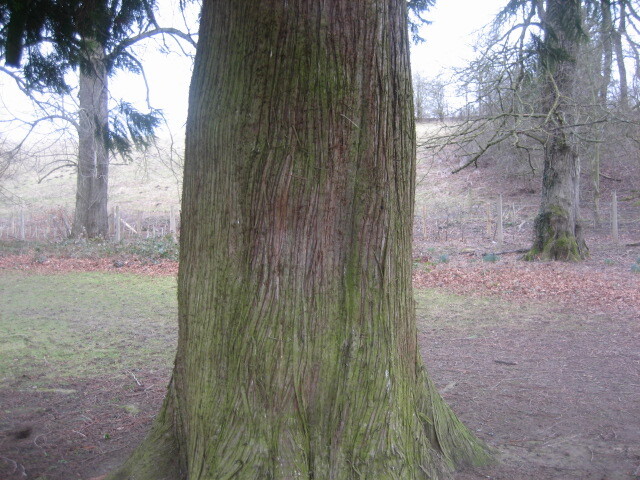
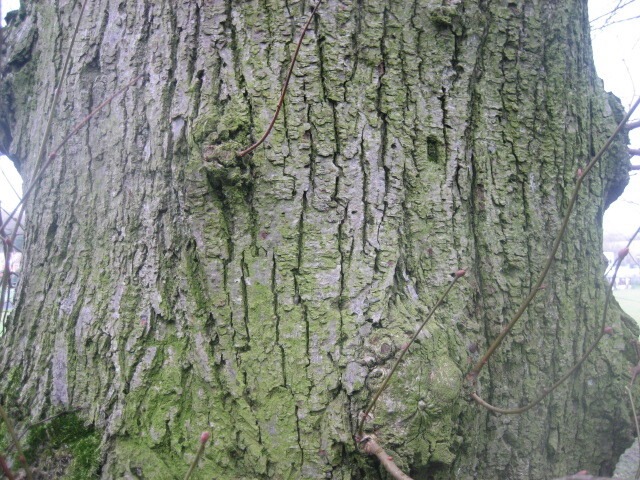
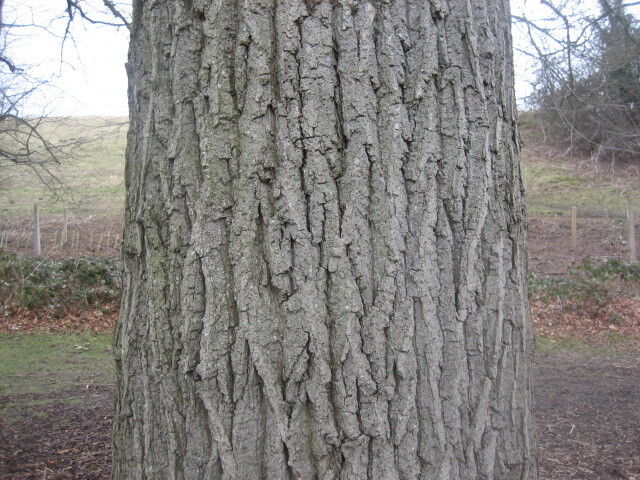
Twigs can be identified in winter here are some common examples
Take a look at the photographs below; you will see common leaf shapes identified.
